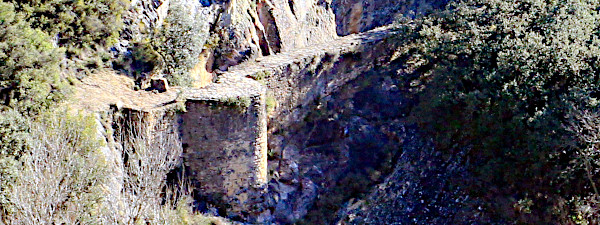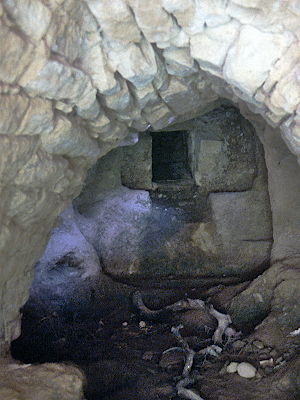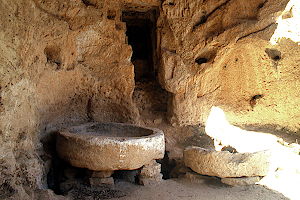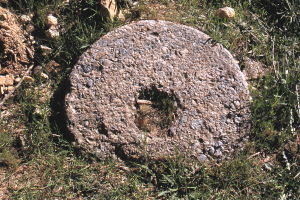Before the restoration only what was carved out of the
rockface was preserved (
†). There was close to no trace of the
small construction we can visit today.
It is difficult to know how truthful the restoration
has been done. I consider it unlikely that the original construction was half open to the outside (1, 3).
The window looking out over the restitution channel is exceptionally narrow and
so high above the floor that its only function could only have been to bring some light inside. It is not possible
to look through it to judge the situation outside.
The cárcavo (3) opens with a rather nice parabolic arch — I have never before seen this in our study region.
Nowadays no wheels are present in the cárcavo, but it is said (
†) that
there were two, which I find difficult to believe as I've seen only one pressure pipe (4).
Inside there are two shallow stone vessels (5) which are reminiscent
more of an oil mill than of a grist mill. The same applies to the decommissioned stones forgotten in the restitution channel (3, 6).







